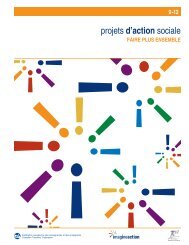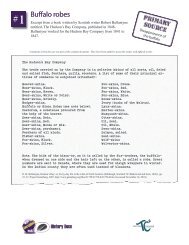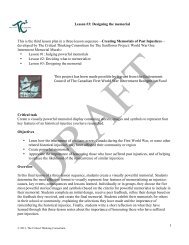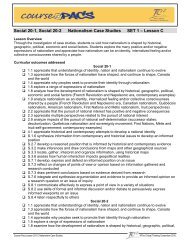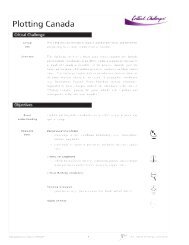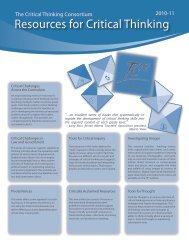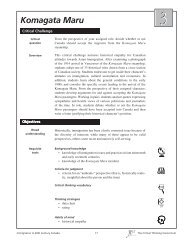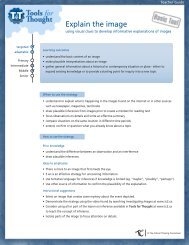Inquiry-mindedness - The Critical Thinking Consortium
Inquiry-mindedness - The Critical Thinking Consortium
Inquiry-mindedness - The Critical Thinking Consortium
You also want an ePaper? Increase the reach of your titles
YUMPU automatically turns print PDFs into web optimized ePapers that Google loves.
INVESTIGATINGPOVERTYTEACHER RESOURCE #6Investigating povertyObjectives: • sensitize students to issues concerning and consequences of poverty;• increase understanding of and empathy for people living in poverty;• introduce and apply the concept and literacy strategies featured in thisresource.CAUTION: Students in your class may live in poverty or consider themselves to be poor.Ensure that classroom discussions of this sensitive issues are respectful and avoid sweepinggeneralizations and stereotyping.Introduce the topic➤➤➤➤➤➤➤➤➤➤➤➤➤➤➤➤Print the following quote on the board and invite students to discuss its meaning and implications.To those who have hunger,give bread;To those who have bread,give a hungerfor justice.Latin American table prayerWithout explaining why, invite students to select a piece of paper from a jar (80% of the papersshould say “poor” and 20% should say “rich”).Ask students who are now “poor” to stand at the back of the room. Designate a small section ofthe classroom for the “poor.” <strong>The</strong> rich students can occupy the rest of the classroom. Explain tostudents that they must remain in their designated space.Give the “rich” group a large bowl of jelly beans (at least 3 jelly beans per student). Give the“poor” group a small bowl of jelly beans (not enough for one per student).Explain that student’s task is to share the jelly beans in their bowl among the students in theirdesignated space. Allow students time to solve this problem and eat the jelly beans.Invite students to share how they felt during this activity and then discuss their experience byposing questions such as:• How did you feel about the unequal distribution of space? Why was this part of the activity?How did the poor feel? How did the rich feel? Did the rich think about the poor?• What challenges did your group face when distributing the jelly beans? What did the jellybeans represent (for example, money, world food)?• Did the rich group share with the poor? If so, how did you decide how much to share? If not,why not?• What did you learn from this activity?• What questions have been raised?With ELEMENTARY students, you my want to provide additional jelly beans to students in the“poor” group before the end of the class.Explain to students that they will investigate the topic of “poverty” and point out that the waythey approach an investigation influences what they learn. Introduce the attitude of curiosityor inquiry-<strong>mindedness</strong> using materials from Teacher Resource #1. Based on the attributes ofinquiry-<strong>mindedness</strong>, invite students to assess the extent to which they demonstrated this habit ofTools for Thought 2008–09:3 48 © <strong>The</strong> <strong>Critical</strong> <strong>Thinking</strong> <strong>Consortium</strong>



